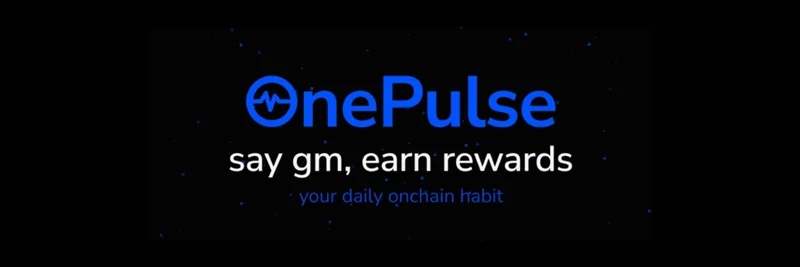STWT is a token on Base that’s attracting early curiosity, but verified public details are limited at the time of writing. If you’re evaluating STWT, this guide walks through what’s known so far, how to verify the contract on-chain, ways to track liquidity and holders, and smart steps to research before trading.
Quick facts
- Token: STWT
- Chain: Base (an Ethereum Layer 2 developed by Coinbase)
- Contract: 0xa3cd100b88ca065ee6626e25d69a2bb99209b3d3
- Explorer: BaseScan token page
What we know so far
- Major token trackers: STWT does not currently appear on prominent listings like CoinGecko or CoinMarketCap. That usually means the project is new, niche, or still building.
- Use case status: There’s no confirmed whitepaper, official docs, or verified tokenomics available via mainstream sources. That leaves the token’s purpose (governance, utility, rewards, etc.) unconfirmed for now.
- Ecosystem context: Base is designed for low fees and high throughput while inheriting Ethereum’s security. New tokens frequently debut here, so early information can be sparse until communities or teams publish details.
In short: STWT looks early-stage or under-the-radar. Treat it as speculative until more official information is released.
How to verify on-chain (step-by-step)
Confirm the contract
- Open the BaseScan token page and confirm the address matches exactly: 0xa3cd100b88ca065ee6626e25d69a2bb99209b3d3.
- Check if the contract source is verified, whether it’s upgradeable (proxy), and if there are admin functions that can change fees or blacklist addresses.
Review holders and distribution
- On BaseScan, look at the Holders tab. High concentration in a few wallets (e.g., >50% in one or two wallets excluding liquidity pools) can indicate centralization risk.
- Check whether the top wallets are contracts (LP pools) versus externally owned accounts.
Inspect liquidity
- Identify where liquidity is added (e.g., a Base DEX pool). Thin or unlockable liquidity can increase the risk of large price swings or rug pulls.
- Look for LP lock signals (e.g., references to time-locked LP tokens) in team/community channels. Always verify independently.
Scan for risk flags
- Use tools that assess honeypots (can you sell?), max transaction limits, and high taxes. Platforms that perform security checks and surface wallet behavior can help you avoid obvious traps.
Track on-chain activity
- Review recent transfers, deployer history, and contract events. Sudden minting, ownership changes, or admin calls can be meaningful signals.
Where to track and trade STWT
If you choose to explore or trade, always paste the exact contract address to avoid imposters.
- gmgn.ai (recommended): View real-time analytics and market activity for STWT on Base here: https://gmgn.ai/base/token/fV1R5sZ5_0xa3cd100b88ca065ee6626e25d69a2bb99209b3d3
- Uniswap on Base: Search the contract address directly in the Uniswap interface after switching network to Base.
- Aerodrome: A leading Base-native DEX. Search the contract on Aerodrome.
Tip: Double-check token logos, names, and tickers—these can be spoofed. The contract address is the single source of truth.
A practical research checklist
Contract integrity
- Is the contract verified on BaseScan?
- Is ownership renounced or are there admin roles that can change fees/blacklist?
- Is it a proxy (upgradeable)? If yes, who can upgrade it?
Liquidity and markets
- Which DEX pools exist, and how deep is liquidity?
- Is the LP locked? For how long and via what locker?
- What are buy/sell taxes (if any), slippage requirements, and max wallet/tx limits?
On-chain behavior
- How distributed are holders? Any large insiders still active?
- Is there consistent organic volume or just short bursts?
Off-chain signals
- Official website, X (Twitter), Telegram, or Discord with verifiable links.
- Team transparency: Are the builders known? Any past projects?
- Documentation: Whitepaper or litepaper, roadmap, tokenomics.
Community validation
- Are third-party researchers or trusted KOLs covering it? Look for independent analysis rather than reposts of marketing claims.
Understanding Base and why it matters
Base is an Ethereum Layer 2 focused on low fees and fast confirmations, making it popular for experimental tokens and early-stage projects. Lower costs can accelerate user adoption—but also make it easier for low-effort or short-lived tokens to launch. Always apply extra diligence with new contracts on fast-moving L2s. Learn more about the network at base.org.
Common risks to consider
- Illiquidity: Small pools can cause extreme price impact or make exits difficult.
- Centralized control: Admin keys or upgradeable contracts can change token behavior.
- Taxes and trading limits: High buy/sell taxes or restrictive limits can trap traders.
- Honeypots: Some contracts block selling entirely. Test with a small amount if you must interact.
- Impersonation: Fake tokens often copy tickers. Only trust the contract address.
None of this is financial advice. Never risk more than you can afford to lose.
If you’re new to Base, a quick start
- Bridge funds: Use reputable bridges (e.g., Base Bridge) to move ETH to Base for gas and trading.
- Set slippage carefully: New tokens may require custom slippage. Start low and adjust cautiously.
- Start small: Test transactions before committing larger sizes.
FAQs
Is STWT listed on major aggregators?
- At the time of writing, no. That can change—re-check periodically.
What’s the official website or whitepaper?
- None verified yet. Monitor official channels and verify links from multiple sources.
Is STWT a meme token or utility token?
- Unknown. Without an official roadmap or tokenomics, treat it as speculative.
What’s the correct contract?
- 0xa3cd100b88ca065ee6626e25d69a2bb99209b3d3 on Base. Always copy this address directly from reliable sources like BaseScan.
Bottom line
STWT on Base appears early-stage with limited verified information. If you’re exploring, do rigorous on-chain checks, confirm liquidity and permissions, and use reputable tools to assess risk. When tracking or trading, include platforms that provide real-time analytics and safety checks, and always paste the exact contract address to avoid lookalikes.




